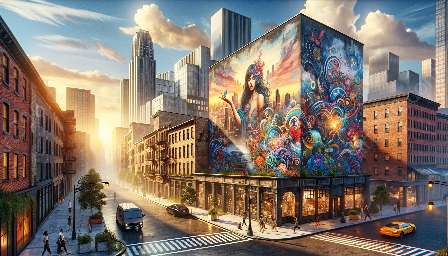Street art, often associated with urban landscapes and underground culture, has increasingly become a focal point for discussions around economic and social implications. This art form, born out of activism and counterculture, carries significant implications for the communities in which it is created. This article explores how street art impacts both the local economy and the social fabric, and its role in activism.
Understanding Street Art
At its core, street art is a form of art that is created and displayed in public areas, often without permission. It encompasses a wide range of artistic expressions, including murals, stencils, graffiti, and installations. Street artists use public spaces as their canvas to convey powerful messages, challenge norms, and spark conversations.
Economic Implications
Street art can have significant economic implications for communities. When strategically placed, street art can attract tourists and art enthusiasts, thus contributing to the local economy through increased foot traffic and cultural tourism. In areas where street art is prevalent, businesses may also benefit from increased visibility and a more vibrant atmosphere, potentially boosting sales and stimulating entrepreneurship.
Moreover, the creation of street art often involves collaboration with local businesses, which can lead to economic partnerships and community development. Street art festivals and events, which showcase the work of local and international artists, further contribute to the economic vitality of a region, attracting visitors and fostering a sense of cultural exchange and inclusivity.
Social Implications
Beyond its economic impact, street art can profoundly influence the social fabric of a community. By addressing social and political issues, street art serves as a platform for marginalized voices, often bringing attention to topics such as inequality, justice, and human rights. In this way, street art becomes a tool for raising awareness and promoting social change.
Furthermore, street art can redefine public spaces, transforming mundane walls and buildings into vibrant, thought-provoking sites that engage and inspire residents. By creating visual narratives that reflect the local culture and values, street art contributes to a sense of community identity and pride.
Connection to Activism
Street art has been closely linked to activism, with many artists using their work to advocate for political and social causes. The public nature of street art allows these messages to reach a broad audience, sparking conversations and challenging the status quo. From highlighting environmental issues to championing human rights, street art serves as a catalyst for activism, empowering individuals to express dissent and demand change.
As a form of grassroots activism, street art provides a platform for artists to confront power imbalances, question authority, and offer alternative perspectives. By reclaiming public spaces as sites of resistance and expression, street art becomes a powerful tool for dissent and mobilization.
Conclusion
Street art's economic and social implications are deeply intertwined with its status as a form of activism. This art form transcend boundaries, challenging established norms, inspiring dialogue, and spurring community revitalization. As we continue to explore the multifaceted impact of street art, it becomes evident that it is not merely a visual spectacle but a transformative force that reshapes economies, nurtures social cohesion, and amplifies the voices of the marginalized.

